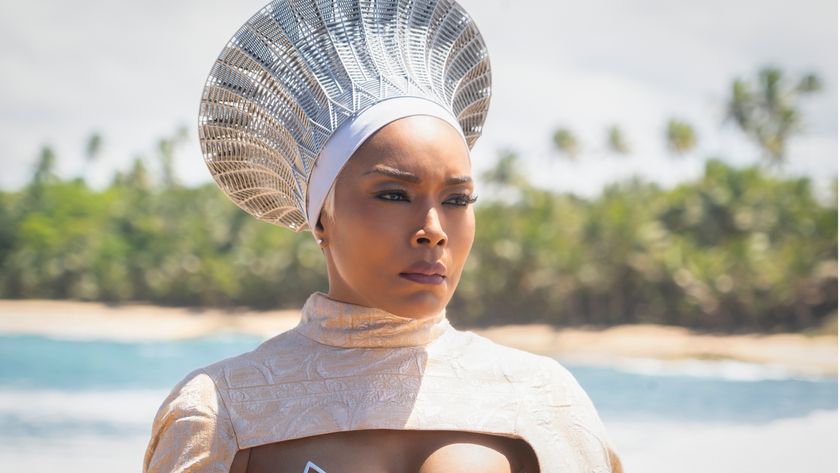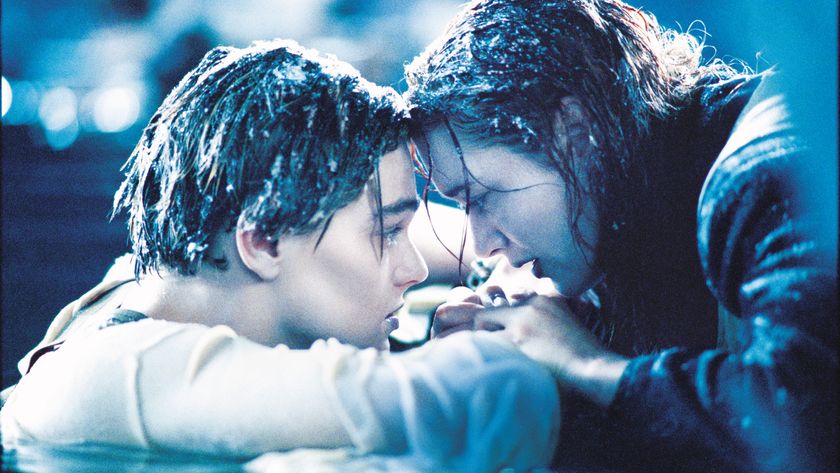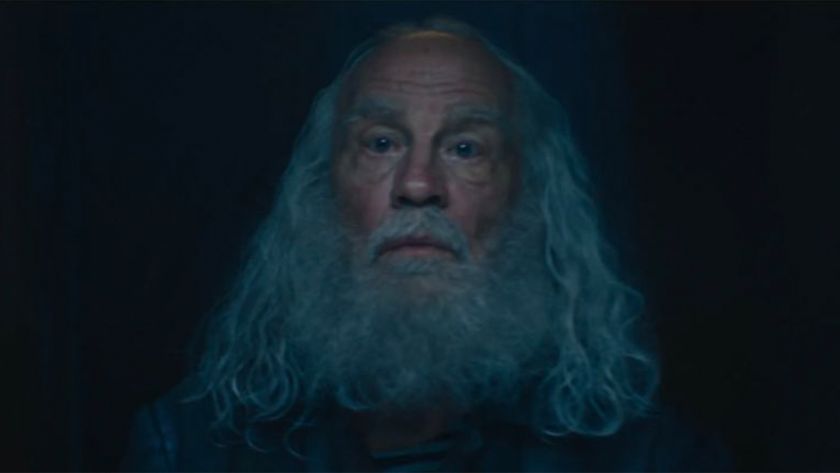The Story Behind True Grit
The Coens head West
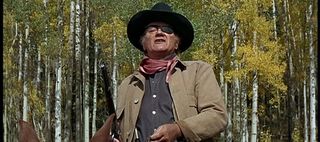
Awards grabber
Could it be that some movie roles are destined for Oscar glory? It’s a running joke among movie fans that playing a member of the royal family is all but guaranteed to win an actor an Academy Award (most famously, Dame Judi Dench grabbed one for her tiny, grandstanding appearance as Queen Elizabeth in Shakespeare In Love ).
And then there’s Rooster Cogburn. A far cry from the British royals, he’s the gruff, eye-patched anti-hero of True Grit , a no-nonsense, aging US Marshal who was originally portrayed by John Wayne in Henry Hathaway’s 1969 adaptation of Charles Portis’ novel. The Duke bagged an Oscar for his efforts.
Now, 40 years later, Jeff Bridges has strapped on the patch and cocky ‘tude to play Cogburn, and has himself earned an Oscar nod for the role. Let’s see where it all began…
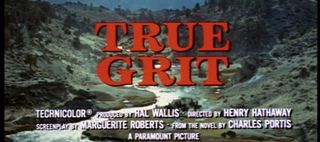
True grit
It is the 1870s. Fourteen-year-old Mattie Ross pitches up in the dusty town of Fort Smith, where her father has been killed by a coward known as Tom Chaney. Now on the run in Indian Territory, Chaney has all but escaped Scott free.
But Mattie is having none of it. Adamant that she’ll see justice be served, the driven, headstrong teenager sets about hiring US Marshal Rooster Cogburn to track down and apprehend Chaney. But Texas Ranger LaBoeuf is also on Chaney’s trail, and could get in the way of Ross’ mission.
First published in 1968 as a serial in the Saturday Evening Post , Charles Portis’ coming-of-age story is one of redemption, revenge and hardship. Once published in novel form, it quickly became a ‘buttonhole book’, one of those popular works of fiction that gains a reputation as word of mouth stretches its renown.
“I find True Grit to be one of the very best American novels: it is a rousing adventure story and deeply perceptive about the makeup of the American character,” says George Pelecanos, a Washington D.C writer of contemporary noir fiction.
Not surprisingly, the movie rights were quickly snatched up…
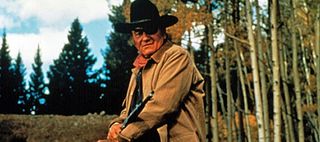
The Duke
Henry Hathaway directed the first movie adaptation of True Grit in 1969. A renowned Western filmmaker, Hathaway worked with screenwriter Marguerite Roberts on the film. Wayne would credit Roberts’ script as “the best [ he’d ] ever read”.
The role of young Mattie Ross was originally won by Mia Farrow. But while making another film in England, actor Robert Mitchum warned her not to work with the “cantankerous” Hathaway. Mia dropped out, and Kim Darby took up the part.
During shooting in and around Colorado, Wayne was unable to perform many of his own stunts owing to the fact that he’d had a lung removed four years previously. In fact, he could barely walk 30 feet without getting out of breath.
Though Hathaway’s film went on to earn Wayne his only Oscar (“Wow! If I'd known that, I'd have put that patch on 35 years earlier,” joked the star), it was criticised for Darby’s uninvolving performance, and the fact that the film diverged away from the original material so much. Years later, the Coen brothers would put that right…
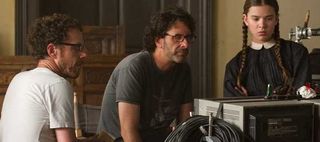
The Coens
“People ask about whether the previous movie was a factor at all,” says Joel Coen, “whether it was intimidating in any way, but honestly, we weren’t thinking about it much – we were thinking about the novel and really didn’t care that they’d made a movie about it with John Wayne.”
Joel is one half of the patented Coen Brothers (with sibling Ethan), who together have made some of the most beloved films of the last 20+ years. The Hudsucker Proxy, Fargo, The Big Lebowski, No Country For Old Men.
Together, they’ve won four Oscars, and are celebrated as auteurs whose works are all distinct from one another. The pair had, according to Joel, seen Wayne’s True Grit “when we were kids”, but were much more enamoured of the novel.
“We both knew the novel from a long time ago, and somehow the discussion came up a few years ago,” he says of the initial idea behind adapting Portis’ tome.
“I think we were making or finishing No Country For Old Men when we first started talking about it, and it was a while sort of getting the whole thing together. It came from the book, we both read, I think Ethan read all of Charles Portis’ stuff…”
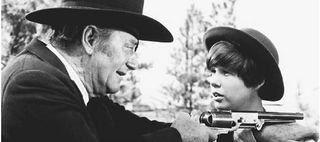
Teen queen
For the Coens, one of the main things that made Portis’ novel so “strange and funny” was the narration of 14-year-old Mattie Ross.
“The story is definitely in that weird genre of young persons’ adventures,” says Joel. Adds Ethan: “It’s told by this very self assured 14 year-old girl. But it’s also like Alice In Wonderland because this 14-year-old girl finds herself in an environment that’s really, nowadays, exotic.”
Mattie would also be key to the Coens’ new adaptation of Portis’ story. Whereas Hathaway’s film repositioned Cogburn as the lead, with Mattie more of a twee sidekick, the Coens decided to restore Mattie as the lead character, and retain her bold, lyrical narration.
By turn, it was a tact that appealed to the man they’d been considering asking to play Cogburn…
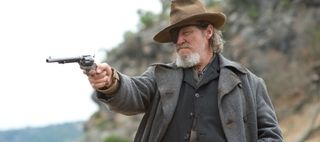
Building Bridges
“When the Coens first mentioned the idea of making True Grit , I said ‘Gee, didn’t they make that movie? Why do you want to do it again?’” recalls Jeff Bridges. “And they said, ‘We’re not remaking the film, we’re making a version of the original book by Charles Portis.’
“So I read the book and I immediately saw what they were talking about. It seemed like the perfect story for the Coens to make into a movie. And since they have never made an actual Western adventure before, it was going to be a surprise.”
Having worked with the Coens on cult smash The Big Lebowski in 1998, Bridges was attracted to the role of the Whiskey-guzzling, fearsome and potentially inept US Marshal.
Considering his extensive riding experience, not to mention the fact that his father Lloyd had starred in many Westerns in his time, Bridges was the perfect fit for Cogburn.
“Rooster Cogburn kind of straddles the law,” the actor explains, “he’s got one foot on the side of the law and one foot entirely against it.
“But Mattie is looking for a man who has true grit, and that, he certainly has in spades. He’s got that thing where no matter how tough the situation is, he’s going to see it through to the end.” Now to find a Mattie…
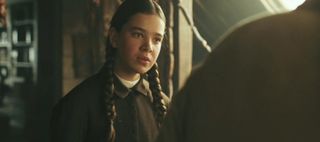
Ross is boss
One of the biggest challenges that the Coen brothers would face in their reinterpretation of True Grit would be finding a young female lead who could both convince as the determined Mattie, but also handle the stylised period dialogue.
During a nationwide open casting call, Grit ’s casting directors scoured America for the right girl for the role. Finally, when they were right down to the wire, they found Hailee Steinfeld. Just 13 years old, she embodied everything that the production team were looking for.
“After seeing people from all over, ironically we ended up choosing a young girl from the Los Angeles area so it just goes to show,” says Joel. “We cast Hailee pretty much just before we started shooting, and we were very lucky to find her.”
“Who wouldn’t be attracted to Mattie?” says Steinfeld, who read for the part wearing a burlap skirt opposite Jeff Bridges. “She’s tough, she’s witty and she’s just 14, which is incredible.
“She has one goal, to find the killer of her father, and she tells herself she will not go on with her life until it is done – and then she goes for it. That’s the main similarity between us: that we would both stop at nothing to get what we want.” There was still that dialogue, of course…
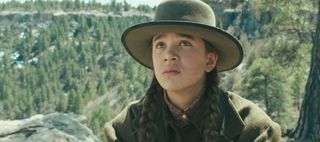
Delightful dialogue
In their determination to craft a true adaptation of Portis’ True Grit , the Coens were adamant that the tome’s distinctive dialogue should remain intact.
“The formality of it and the floweriness of it also is just from the book,” reveals Ethan. “That was the first thing Jeff mentioned, noticed, and liked, the kind of foreign-sounding nature of the dialogue and lack of contractions.
“It wasn't a problem for us. We just lifted it from the book. I don't know how the actors feel about it.” For the Brothers, the dealmaker (or breaker) with regard to the role of young Mattie was always if an actress could handle the tongue-tying dialogue.
Says Joel: “99.9% of the hundreds or thousands of girls that read for this part didn't have the facility. They sort of washed out at the level of not being able to do the language. That was something which was never an issue with Hailee.
“Right from the beginning, it was clear that she was completely comfortable with the language. The language isn't, as everyone's pointed out, our language. That was the threshold level at which you could sort of hope to do the part, but Hailee had it right from the get-go in a very, very natural way.” Time to throw a Ranger into the mix…
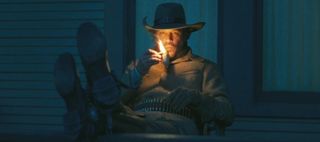
Strutting feathers
Top of the Coen’s list for the part of Texas Ranger LaBoeuf, who joins Mattie and Cogburn on their quest for vengeance, was Matt Damon.
The Brothers’ chief concern was the actor’s availability, but happily the stars aligned and the Bourne actor was able to sign on to their film. For his part, Damon says that LaBoeuf reminded him on Tommy Lee Jones and Bill Clinton – a true foil for Cogburn’s lazy disposition.
“They’re like oil and water,” says Damon. “Rooster doesn’t see much value in LaBoeuf and LaBoeuf is very proud. He’s trying to impress Rooster yet he is also irked that Rooster clearly doesn’t appreciate what it means to be a Texas Ranger, which to him is a very big deal.
“It’s one of those fun relationships, with this macho thing going on whenever they’re in front of each other, yet then you also see the reality of who they are when they’re not trying to strut their feathers.
“Jeff makes for a classic American protagonist because he is so perfectly imperfect,” he considers. “He’s funny, he’s dynamic and he brings a joy to his work that is infectious.” A challenge was on the horizon for the Coens, though...

Western leanings
Directing a Western would be a new challenge for the Coens. The closest they’d come was with No Country For Old Men , with its sand-swept Texan landscape. For them, though, Grit was more than just a Western.
“I don't think we thought about it as a genre movie so much as you might think,” explains Ethan. “It was an interest in the novel, the story, Charles Portis' novel.
“It is a Western, inarguably. There are guys with six-shooter guns on horses, but it's not a Zane Grey story. It's not a Western in that sense. Really, we were thinking about the novel more than doing a Western per se.”
Joel adds that the story also contains “a lot of comedy. There's a lot of humour in the Charles Portis novel. It was one of the things that attracted us to the novel and the idea of adapting it.
“We wanted what was funny about the book, what was the humour of the book, to come through in the movie. That was important.” Key to any Western, though, is the landscapes…
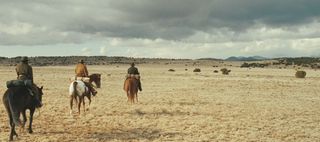
Ravishing landscapes
“You know what? That's one thing that's not faithful to the novel,” Ethan points out. “The landscape is a total cheat, but we kind of thought people will think it's a Western, and some things you just can't mess with. People want that.”
In order to craft their lush visuals, the Coens hired trusted previous co-workers in the form of award-winning cinematographer Roger Deakins ( No Country and The Assassination Of Jesse James ) and production designer Jess Gonchor.
Their extensive research uncovered New Mexico and Austin as ideal shooting locations. “To me, this film is a kind of amalgamation of that stark natural realism in Jesse James with the poetic realism of a Cormac McCarthy story,” comments Deakins.
“I was very glad I had done both of those films before True Grit .” The story’s themes were key in creating its cinematic look…
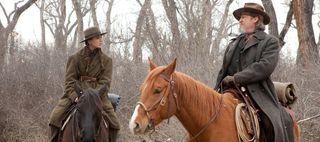
Sounds good
Deakins reveals that his main reference point when setting up the look and feel of True Grit was Portis’ original novel.
“I began by reading the book,” he says, “which is so poignant and has such a deep sense of the period. The idea of this young girl coming of age during a journey of revenge is both harsh and melancholy.
"But because the whole story is really the memory of a young girl, that lends to it a slightly larger than life quality.
“Then I read the script, and of course Joel and Ethan write in an extraordinarily visual way. They created a path of storyboards but the look of this film really developed as we found it, scene by scene. For example, the scene with the hanging tree is one we looked at again and again.
“Originally, it was going to be in a completely open, empty wilderness, but then we found this stand of denuded Cottonwoods, literally moments before they were about to bud, and that influenced the whole creation of the sequence.”
For his research, production designer Jess Gonchor even visited the real, modern day Fort Smith…

Smithsonian surrounds
Now the second largest city in Arkansas, Fort Smith turned out to be a treasure trove of invaluable information regarding the city’s past. Gonchor dug up old photographs and historical artefacts that proved pivotal in his recreation of the town in a past time.
In Granger, Texas, the production designer discovered the perfect location to recreate 1870s Ft Smith. With its brick buildings, large streets and historic train line, it was ideal for the film.
“Granger was the town that time forgot,” says Gonchor. “It had post Civil War buildings a lot like the ones I had seen in my research, and it had the train crossing, which is so important because you have to sense that Fort Smith is the last stop on the line as Mattie arrives on the train.”
With the help of the fantastic location, Gonchor was able to transform a small town into a bustling city. “We did a little bit with visual effects to extend the town, but not much,” he reveals.
“We were constantly looking for ways to make it feel bigger. When we put the dirt down in the roads - that was the turning point. It put just the right touch on things and gave everything more scale. That’s when I said, ‘We’re going to be able to do this.’” Next up? Costumes…
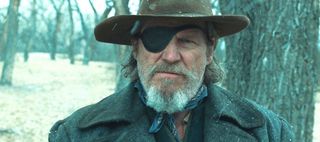
Fearless fashion
The locations, of course, weren’t the only important aspect in recreating a bygone time. Key to the film’s authentic look would be period costumes that really brought the era to life.
Teaming up with the Coens for the tenth time, costume designer Mary Zophres was thrilled to find herself challenged with that period of time. “After a brief conversation with the brothers, I started to do massive amounts of research,” she says.
“I went to the Western Research Library every afternoon, and the great librarian there also got in touch with the Ft. Smith Historical Society. I looked at every piece of material from the period that I could get my hands on.”
Bridges found working with Zophres invaluable. “I worked with Mary on The Big Lebowski and I sure admired the expertise she brought to this,” he says. “She gave me wonderful books to look at with all the styles a guy like Rooster might have worn.
“Then, together, we picked just the right hat, just the right eye patch, just the right boots – the boots are very important – and it really brings you back into those times.”
With shooting completed between March and April 2010, the film was ready to roll…
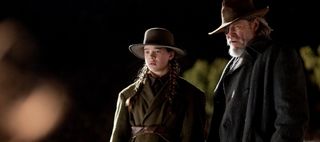
Release me
Released Stateside in December, True Grit beat all expectations by taking $25.6m at the box office in its opening weekend. After three weeks of release, it knocked Little Fockers from the number one spot, and was the Coen’s highest grossing film - surpassing No Country ’s $74.3m.
Owing to its success (presently it's made $154m worldwide), the Los Angeles Times have predicted that the film will become the second highest grossing Western ever made, just behind Dances With Wolves. It’s currently 95% fresh at Rotten Tomatoes.
None were more pleased with the final film than the cast. “The movie has an incredible look,” says Damon. “The locations and the composition give you this sense of a passage into another world.”
Adds Bridges: “The light and the geography, everything was just beautiful.
"Every day, the Coens showed up in cowboy hats, which was comic, but there was also something about the image that set a wonderful environment, that set that certain mood for True Grit. ” Then, of course, the Oscars came a-knocking…
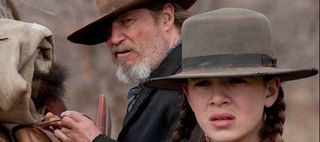
Oscars 2011
Having won an Oscar last year for his performance in indie drama Crazy Heart , True Grit has guaranteed that Jeff Bridges is again up for an Academy Award this year. He’s not alone, either.
Co-star Hailee Steinfeld has been nominated (for a controversial Best Supporting Actress gong; she deserved a Best Actress nod), while the Coens are up for Best Director – and the film itself for Best Picture. In total, True Grit has 10 nominations.
It’s quite an accomplishment. Bridges’ reaction to his nomination consisted of two well-selected words - “Yee haw!”
So what do the filmmakers think true grit is themselves? “Jeff said he believes it’s the quality of seeing something through to the end,” says Ethan. “I’d echo that sentiment.” Could that philosophy extend to the Oscars? We’ll see.
Josh Winning has worn a lot of hats over the years. Contributing Editor at Total Film, writer for SFX, and senior film writer at the Radio Times. Josh has also penned a novel about mysteries and monsters, is the co-host of a movie podcast, and has a library of pretty phenomenal stories from visiting some of the biggest TV and film sets in the world. He would also like you to know that he "lives for cat videos..." Don't we all, Josh. Don't we all.
Most Popular





